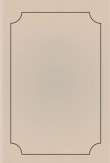You are here
قراءة كتاب Terrestrial and Celestial Globes Volume 2 Their History and Construction Including a Consideration of their Value as Aids in the Study of Geography and Astronomy
تنويه: تعرض هنا نبذة من اول ١٠ صفحات فقط من الكتاب الالكتروني، لقراءة الكتاب كاملا اضغط على الزر “اشتر الآن"

Terrestrial and Celestial Globes Volume 2 Their History and Construction Including a Consideration of their Value as Aids in the Study of Geography and Astronomy
Transcriber’s note:
Many foreign and English words in the text and in the references occur in joined, hyphenated and spaced forms with almost equal frequency. These have not been modified for the sake of fidelity to the printed text.
The symbol used after q as a scribal abbreviation in Latin has been represented by ȝ.
This book was published in two volumes, of which this is the second. The first volume was released as Project Gutenberg ebook #39866, available at http://www.gutenberg.org/ebooks/39866.
This volume contains links to pages in the other volume. Although we verify the correctness of these links at the time of posting, these links may not work, for various reasons, for various people, at various times.
|
COPYRIGHT, 1921, BY
THE HISPANIC SOCIETY OF AMERICA
Table of Contents
| PAGE | ||
| List of Illustrations | vii | |
|
Chapter X: Globes and Globe Makers of the Early Seventeenth Century. The Dutch Scientific Masters and Their Preëminent Leadership. |
1 | |
|
The shifting of globe making interest to the northwest of Europe at the close of the sixteenth century.—The Van Langrens as leaders.—Jodocus Hondius and his son Henricus.—Willem Jansz. Blaeu and his sons, John and Cornelius.—The Ferreri armillary sphere.—Globes of Peter Plancius.—Isaac Habrecht.—Globes of Mattheus Greuter and their reproduction by Rossi.—Manfredus Settàla.—Abraham Goos.—Adam Heroldt. |
||
|
Chapter XI: Globes of the Second Half of the Seventeenth Century |
72 | |
|
Certain striking tendencies exhibited in the matter of globe making in this period.—The Gottorp globes.—Weigel’s globes.—Carlo Benci.—Amantius Moroncelli.—Castlemaine’s immovable globe.—The armillary of Treffler.—Armillary sphere of Gian Battista Alberti.—The numerous globes of P. Vincenzo Coronelli.—Certain anonymous globes of the period.—Johannes Maccarius.—Jos. Antonius Volpes.—Vitale Giordani.—George Christopher Eimmart.—Giuseppe Scarabelli.—Giovanni Battista.—Joseph Moxon.—The Chinese globes of Peking. |
||
|
Chapter XII: Globes and Globe Makers of the First Half of the Eighteenth Century—from Delisle to Ferguson |
137 | |
|
Activities of Guillaume Delisle.—Jean Dominique Cassini and his reforms.—Vincenzo Miot.—The globes of Gerhard and Leonhard Valk.—Activities of John Senex.—Nicolas Bion.—The armillary sphere of Carmelo Cartilia.—Mattheus Seutter of Augsburg.—Robert Morden.—Jean Antoine Nollet.—Johann Gabriel Doppelmayr of Nürnberg.—Terrestrial globe of Cusani.—Terrestrial globes of Siena.—The work of the monk Pietro Maria da Vinchio.—James Ferguson of Scotland. |
||
|
Chapter XIII: Globes and Globe Makers of the Second Half of the Eighteenth Century |
175 | |
|
Few globe makers of striking distinction in this period.—An apparent decrease in scientific interest in globes, but an apparent increase in popular interest.—Gilles and Didier Robert de Vaugondy.—The work of Desnos.—Globes of Gian Francesco Costa the Venetian.—Globes of Akerman and Akrel.—The French globe makers Rigobert Bonne and Lalande.—Charles Messier and Jean Fortin.—Globes of George Adams the Elder, of George Adams the Younger, and of Dudley Adams.—Small globes of Nathaniel Hill.—The work of Innocente Alessandri and Pietro Scaltaglia.—Charles Francis Delamarche.—Manuscript globes of Vincenzo Rosa.—Geographer and globe maker Giovanni Maria Cassini.—Globes of William Cary. |
||
|
Chapter XIV: The Technic of Globe Construction—Materials and Methods |
196 | |
|
General problems to be met.—Development from the simple armilla to the complex sphere.—The references of Ptolemy, Leontius Mechanicus, Alfonso.—Behaim’s leadership in practical globe making.—Materials employed.—Experiments in map projection.—The beginning and rapid development of globe-gore construction.—Various examples of early gore maps.—Equatorial polar and ecliptic polar mountings.—Special features of celestial globe maps.—Globe mountings.—Varying sizes of globes.—The uses of globes.—Moon globes and planetariums |
||
|
Bibliographical List |
220 | |
|
| ||




